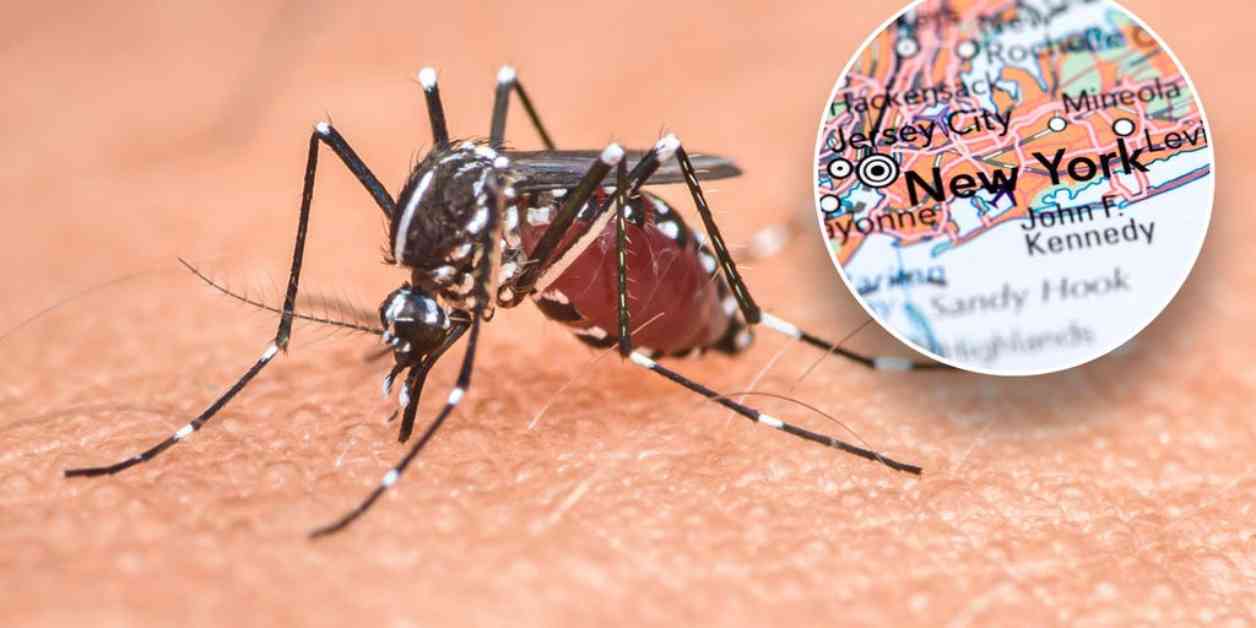New York Resident Succumbs to Mosquito-Borne Disease
A tragic incident has struck the state of New York as it reported its first death from Eastern equine encephalitis (EEE), a disease transmitted through mosquito bites. This marks the first case of EEE in the state since 2015, according to a press release issued by state officials on Monday.
Governor Hochul expressed her commitment to the safety of New Yorkers, stating, “Keeping New Yorkers safe is my top priority.” Following the confirmation of the first human case of EEE, the administration has taken statewide action to protect communities, with additional resources being made available to local departments to bolster public health response efforts.
The patient who succumbed to EEE was the first person to contract the disease in New York since 2015, highlighting the severity of the situation. State Health Commissioner Dr. James McDonald has declared EEE an imminent threat to public health, leading to the allocation of more resources for prevention measures, including mosquito control and public education campaigns.
Understanding Eastern Equine Encephalitis
Eastern equine encephalitis is a viral disease that is primarily spread through the bite of infected mosquitoes. The Centers for Disease Control and Prevention (CDC) describes EEE as a rare but serious illness, with only a few cases reported in the U.S. each year, mostly in states along the Eastern and Gulf Coasts.
Humans and animals infected with the EEE virus are considered “dead-end hosts,” as they cannot transmit the virus to mosquitoes that bite them. Symptoms of EEE can range from mild flu-like illness to severe neurological complications, including fever, vomiting, diarrhea, headache, seizures, behavioral changes, and drowsiness.
Prevention and Control Measures
In response to the rising threat of EEE, New York has announced plans to expand access to insect repellents in parks and campgrounds, urging residents to take proactive steps to protect themselves against mosquito-borne illnesses. The state has also emphasized the importance of using insect repellents containing DEET, wearing protective clothing, and eliminating standing water where mosquitoes breed.
Dr. Kurt Vandock, a public health expert, stresses the importance of seeking medical care promptly if flu-like symptoms develop after being bitten by a mosquito in areas with known EEE activity. The disease can progress rapidly, leading to severe neurological complications and, in some cases, fatalities.
Concerns of Wider Infection
Aside from New York, other states, including Massachusetts, Vermont, New Jersey, Rhode Island, Wisconsin, and New Hampshire, have reported human cases of EEE. The risk of transmission is heightened in areas with conducive weather patterns, high population density, and abundant mosquito populations, creating favorable conditions for rapid virus spread.
The primary vector for EEE, the black-tailed mosquito, is prevalent in the Northeastern United States and is known to transmit the virus from infected birds to other hosts, including humans and horses. As transmission rates increase, interventions such as mosquito control and public health campaigns become essential to mitigate the risk of infection.
Future Outlook and Recommendations
Dr. Marc Siegel, a senior medical analyst, remains cautiously optimistic about the current uptick in EEE cases, noting that the transmission is limited to mosquitoes. However, he stresses the importance of educating the public about prevention measures, including the use of insect repellents, wearing protective clothing, and eliminating mosquito breeding sites.
In the absence of a vaccine for EEE, supportive care remains the primary treatment option for managing symptoms. Public health authorities continue to emphasize the importance of proactive measures to reduce mosquito populations and minimize the risk of infection.
As the threat of vector-borne diseases continues to evolve, it is crucial for communities to remain vigilant and take necessary precautions to protect against mosquito-borne illnesses. By following recommended prevention guidelines and staying informed about the latest developments, individuals can reduce their risk of contracting EEE and other mosquito-borne diseases.




